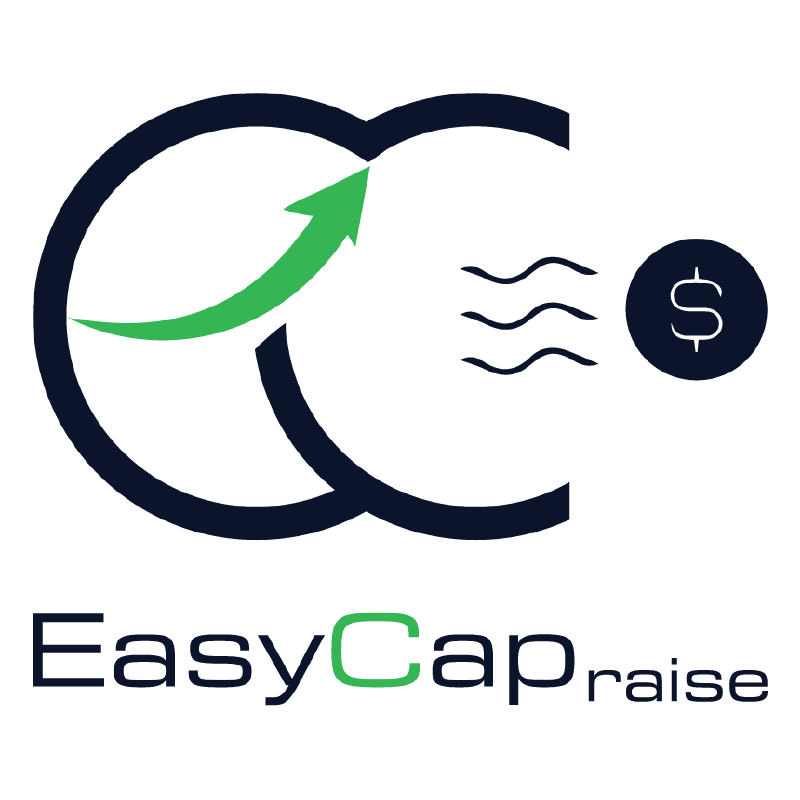The Definitive Guide to Writing Compelling Crypto Whitepapers for ICOs and Blockchain Projects
In the world of cryptocurrencies and blockchain technology, the whitepaper holds immense importance. It serves as a comprehensive document that outlines the concept, technology, and vision behind an Initial Coin Offering (ICO) or blockchain project. Also, the whitepaper gives credibility to the project behind the coin to the token. Writing a compelling crypto whitepaper requires a proficient understanding of the industry, persuasive communication skills, and the ability to engage potential investors. This article will provide a step-by-step guide to help you craft a captivating and effective whitepaper.
- Understanding the Purpose of a Crypto Whitepaper
- Defining Your Project and Objectives
- Conducting In-Depth Market Research
- Crafting an Engaging Abstract
- Outlining the Problem Statement
- Presenting Your Innovative Solution
- Explaining the Technological Architecture
- Describing the Token Economy
- Smart Contracts
- Addressing Potential Risks and Challenges
- Outlining the Roadmap and Timeline
- Highlighting the Marketing and Launch Strategy
- Emphasizing Legal and Regulatory Compliance
- Presenting a Strong Conclusion
- FAQs
- Conclusion
Understanding the Purpose of a Crypto Whitepaper
A crypto whitepaper acts as a crucial tool for fundraising and investor engagement. It should clearly articulate the problem your project aims to solve, present a unique solution, and outline the implementation details. Additionally, it should address potential risks, highlight the project’s advantages, and demonstrate the team’s credibility. The crypto whitepaper should create excitement and build trust among potential investors, enticing them to participate in the project.
Ready to take your business to the next level? Let Easy Capraise be your partner in finding the right investors. Contact us today and unlock the potential of your venture!
Defining Your Project and Objectives
Begin by clearly defining your project and its objectives. Identify the target market, the problem your project aims to solve, and the value it brings to users. Define your project’s vision and mission statement, highlighting its unique selling proposition. This section sets the foundation for the rest of the crypto whitepaper.

When defining your cryptocurrency project and its objectives in the whitepaper, it’s important to consider the various types of projects that exist in the crypto industry. Here are some common project categories in the crypto space:
Payment and Currency Projects
These projects aim to create alternative decentralized digital currencies or improve upon existing ones, offering faster and more efficient transactions.
Smart Contract Platforms
Smart contract platforms enable the development and execution of self-executing contracts on the blockchain. They provide the infrastructure for decentralized applications (DApps) and enable programmable functionality.
Decentralized Finance (DeFi)
DeFi projects focus on providing financial analysis and services and products using decentralized technologies. This includes lending and borrowing platforms, decentralized exchanges (DEXs), yield farming, and liquidity provision.
Governance and DAOs
Governance projects aim to create decentralized autonomous organizations (DAOs) that allow community members to participate in decision-making processes. They enable stakeholders to govern and shape the direction of the project.
Supply Chain and Logistics
These projects leverage blockchain technology to improve transparency and traceability in supply chain management, enabling efficient tracking of goods and preventing fraud.
Identity and Privacy Solutions
Projects in this category aim to enhance identity verification and privacy protection using decentralized systems, providing users with more control over their personal information.
Gaming and NFTs
Gaming projects incorporate blockchain technology to enable ownership and trade of in-game assets through non-fungible tokens (NFTs). They provide players with true ownership and interoperability across different games.
Energy and Sustainability
Projects focusing on energy and sustainability utilize blockchain to enable peer-to-peer energy trading, track carbon emissions, and incentivize renewable energy initiatives.
Healthcare and Data Security
These projects explore the use of blockchain for secure and interoperable healthcare data management, ensuring privacy and enabling efficient sharing of medical records.
Social Impact and Philanthropy
Projects in this category aim to leverage blockchain technology to address social and environmental challenges, facilitating transparent donations and empowering communities.
When defining your project and objectives, consider which category your project falls into and how it aligns with the target market’s needs. Clearly articulate the problem your project aims to solve, the value it brings to users, and its unique selling proposition within the specific category. This will help set the foundation for the rest of your whitepaper, providing a clear understanding of your project’s focus and positioning within the crypto industry.
Conducting In-Depth Market Research
Thorough market research is essential to understand the competitive landscape and identify market trends. Analyze existing solutions, competitors, and potential target users. Highlight the gaps in the current market and explain how your project fills those gaps. Providing statistical data and credible sources will add credibility to your whitepaper.
Crafting an Engaging Abstract
The abstract is the first section potential investors will read, so it must be concise and captivating. Summarize your project’s key features, benefits, and potential impact in a compelling manner. This section should pique the reader’s interest and make them eager to learn more about your project.
Outlining the Problem Statement
Clearly articulate the problem your project addresses. Explain the pain points and challenges faced by users or the industry. Back your statements with data and real-world examples to emphasize the significance of the problem. Help the reader understand the urgency and necessity of your proposed solution.
Presenting Your Innovative Solution
Introduce your unique solution to the identified problem. Clearly explain how your project overcomes the challenges and provides a superior alternative to existing solutions. Use visuals, diagrams, or prototypes to illustrate the concept and make it easier for readers to grasp.
Explaining the Technological Architecture
When including the “technology” section in your cryptocurrency whitepaper, it’s important to provide a detailed overview of the technical architecture behind your project. This section should explain the underlying blockchain technology, consensus mechanism, and other innovative features. Here are some elements to consider including:
Blockchain Technology
Describe the specific blockchain technology your project is built upon, such as Ethereum, Binance Smart Chain, or a custom blockchain solution. Explain the key characteristics of the chosen blockchain technology and its suitability for your project.
Consensus Mechanism
Explain the consensus mechanism used by your blockchain network, whether it’s proof-of-work (PoW), proof-of-stake (PoS), delegated proof-of-stake (DPoS), or another algorithm. Describe how the consensus mechanism ensures the security, scalability, and integrity of your network.
Smart Contracts
Discuss the role of smart contracts in your project. Explain how they are utilized to automate processes, facilitate transactions, and enforce agreements within your ecosystem.
Describing the Token Economy
The use cases of tokens and the token economy are crucial in a cryptocurrency whitepaper. Information about these items helps investors and stakeholders understand the purpose, utility, and distribution of tokens within the project. Here are some common use cases for tokens:
Payment: Tokens can be used as a medium of exchange within the project’s ecosystem, allowing users to make transactions and facilitate economic activity.
Staking and Governance: Tokens can be staked to secure the network, participate in consensus mechanisms, and contribute to network governance by voting on proposals and decisions.
Utility within the Platform: Tokens can grant access to certain features, services, or content within the project’s platform. They may be required to unlock premium features, access exclusive content, or participate in specific activities.
Incentives and Rewards: Tokens can be used to incentivize users for various actions that benefit the ecosystem. This can include rewarding users for contributing content, participating in community activities, or referring new users.
Marketplace and Trading: Tokens can be used as a means of exchange on marketplaces within the project’s ecosystem. They enable the buying, selling, and trading of assets, goods, or services within the platform.
Funding and Investment: Tokens may be offered through token sales or initial coin offerings (ICOs) as a way to raise funds for the project’s development. Investors can acquire tokens as an investment opportunity, with the potential for future value appreciation.
Smart Contracts
Introduce the core team members and advisors involved in your project. Highlight their expertise, experience, and relevant achievements. Demonstrating the credibility and expertise of the team enhances trust and confidence in your project.
Addressing Potential Risks and Challenges
Acknowledge and address potential risks and challenges associated with your project. Be transparent and proactive in explaining how you plan to mitigate these risks. Show that you have a well-thought-out risk management strategy in place.
Outlining the Roadmap and Timeline
When outlining the roadmap and timeline in your cryptocurrency whitepaper, it is essential to provide a detailed plan for your project’s development and milestones. This section helps demonstrate the progression of your project and sets realistic expectations for investors and stakeholders. Here’s an example of how you can present the roadmap and timeline, drawing inspiration from well-known crypto projects:
Example Roadmap and Timeline:
Phase 1: Foundation and Infrastructure Development
- Develop the core technology and infrastructure of the project.
- Conduct extensive research and testing to ensure scalability, security, and efficiency.
- Establish partnerships with key technology providers and industry experts.
Phase 2: MVP Launch and Token Sale
- Release the Minimum Viable Product (MVP) of the platform, showcasing its key functionalities and features.
- Conduct a token sale event to fund further development and gather community support.
- Initiate marketing and awareness campaigns to attract early adopters and investors.
Phase 3: Platform Expansion and User Acquisition
- Scale the platform to accommodate a growing user base and increased transaction volumes.
- Expand partnerships with strategic industry players to enhance platform adoption.
- Implement user acquisition strategies to drive organic growth and community engagement.
Phase 4: Integration with NFT Marketplaces and Partnerships
- Integrate the platform with popular NFT marketplaces like Axie Infinity, The Sandbox, Enjin, Decentraland, and Chiliz.
- Forge partnerships with leading game developers, artists, and content creators to expand the ecosystem.
- Enable seamless interoperability between our platform and these established NFT marketplaces.
Phase 5: Community Governance and Future Enhancements
- Implement a community governance model that allows token holders to participate in decision-making processes.
- Continuously enhance the platform based on community feedback and evolving market needs.
- Explore new opportunities for expansion, such as integrating with additional blockchain networks or exploring cross-chain functionality.
- This example demonstrates how you can structure your roadmap and timeline, breaking it down into phases and quarters. Remember to align the objectives and deliverables with your project’s overall vision and mission statement. It’s essential to be realistic and transparent about the estimated timelines, acknowledging that adjustments may be required based on unforeseen challenges or market conditions.
While the example roadmap provided is generic, you can draw inspiration from well-known crypto projects like Axie Infinity, The Sandbox, Enjin, Decentraland, and Chiliz to understand how they have structured their roadmap sections in their respective whitepapers. Analyzing their approaches can provide insights into effective roadmap presentation and milestone planning.
Highlighting the Marketing and Launch Strategy
Explain your marketing and launch strategy to create awareness and attract users. Detail your plans for community building, partnerships, and promotional activities. Showcase your understanding of the target audience and how you will reach them effectively.
Emphasizing Legal and Regulatory Compliance
In the rapidly evolving landscape of cryptocurrencies, compliance with legal and regulatory frameworks is crucial. Highlight the measures you have taken to ensure compliance and mitigate potential legal risks. Collaborations with legal experts or firms can add credibility to this aspect.
Presenting a Strong Conclusion
Summarize the key points of your crypto whitepaper in a compelling conclusion. Reinforce the vision; the problem solved, and the advantages of your project. Encourage readers to take action and participate in your project.
FAQs
What is a crypto whitepaper?
A crypto whitepaper is a document that explains a cryptocurrency project, like an ICO or blockchain-based venture. It outlines the project’s purpose, technology, and vision. It serves as a tool to attract investors by showcasing the project’s value and technical details. A well-crafted whitepaper builds confidence and differentiates the project from competitors.
Conclusion
Writing a compelling crypto whitepaper requires careful planning, research, and persuasive writing skills. By following the steps outlined in this guide, you can create a captivating whitepaper that effectively communicates your project’s vision, technology, and value proposition. Remember to engage the reader through a conversational tone, and be sure to use analogies and metaphors. Craft your whitepaper with diligence and clarity, and you’ll increase the chances of attracting potential investors to your ICO or blockchain project.
Related Articles
Contact us
Good to have you here! If you have any queries, please leave your message. Our team will reach out soon:)
.





